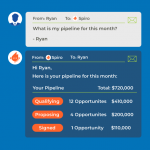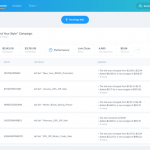GE Wants To Be The Next Artificial Intelligence Powerhouse
When you hear the term “artificial intelligence,” you may think of tech giants Amazon, Google, IBM, Microsoft, or Facebook. Industrial powerhouse General Electric is now aiming to be included on that short list. It may not have a chipper digital assistant like Cortana or Alexa. It won’t sort through selfies, but it will look through X-rays. It won’t recommend movies, but it will suggest how to care for a diesel locomotive. Today, GE announced a pair of acquisitions and new services that will bring machine learning AI to the kinds of products it’s known for, including planes, trains, X-ray machines, and power plants.
The effort started in 2015 when GE announced Predix Cloud—an online platform to network and collect data from sensors on industrial machinery such as gas turbines or windmills. At the time, GE touted the benefits of using machine learning to find patterns in sensor data that could lead to energy savings or preventative maintenance before a breakdown. Predix Cloud opened up to customers in February, but GE is still building up the AI capabilities to fulfill the promise. “We were using machine learning, but I would call it in a custom way,” says Bill Ruh, GE’s chief digital officer and CEO of its GE Digital business (GE calls its division heads CEOs). “And we hadn’t gotten to a general-purpose framework in machine learning.”
Today GE revealed the purchase of two AI companies that Ruh says will get them there. Bit Stew Systems, founded in 2005, was already doing much of what Predix Cloud promises—collecting and analyzing sensor data from power utilities, oil and gas companies, aviation, and factories. (GE Ventures has funded the company.) Customers include BC Hydro, Pacific Gas & Electric, and Scottish & Southern Energy.
The second purchase, Wise.io is a less obvious purchase. Founded by astrophysics and AI experts using machine learning to study the heavens, the company reapplied the tech to streamlining a company’s customer support systems, picking up clients like Pinterest, Twilio, and TaskRabbit. GE believes the technology will transfer yet again, to managing industrial machines. “I think by the middle of next year we will have a full machine learning stack,” says Ruh.
GE also just bought ServiceMax, maker of software for dispatching field service agents, for a cool $915 million. “It’s a unicorn, essentially,” he says.
Though young, Predix is growing fast, with 270 partner companies using the platform, according to GE, which expects revenue on software and services to grow over 25% this year, to more than $7 billion. Ruh calls Predix a “significant part” of that extra money. And he’s ready to brag, taking a jab at IBM Watson for being a “general-purpose” machine-learning provider without the deep knowledge of the industries it serves. “We have domain algorithms, on machine learning, that’ll know what a power plant is and all the depth of that, that a general-purpose machine learning will never really understand,” he says.
GE Healthcare lobbed a shot across IBM’s bow in announcing a deal with UCSF to develop AI-driven apps for the care of various diseases. (See my colleague Chrissy Farr’s full coverage here) Health is the first industry IBM Watson targeted (starting with years of studying cancer data), and UCSF is a nice prize.
Not synonymous with health is another new GE customer, McDonald’s, which is using a Predix service called Current to lower energy costs on items like heating and lighting. Most of GE’s new offerings are in the energy realm, such as Digital Substation, which promises to use monitoring and AI to reduce downtime for power companies.
One especially dull-sounding new Predix service—Predictive Corrosion Management—touches on a very hot political issue: giant oil and gas pipeline projects. Over 400 people have been arrested in months of protests against the Dakota Access Pipeline, which would carry crude oil from North Dakota to Illinois. The issue is very complicated, but one concern of protestors is that a pipeline rupture would contaminate drinking water for the Standing Rock Sioux reservation.
“I think absolutely this is aimed at that problem. If you look at why pipelines spill, it’s corrosion,” says Ruh. “We believe that 10 years from now, we can detect a leak before it occurs and fix it before you see it happen.” Given how political battles over pipelines drag on, 10 years might not be so long to wait.
related video: Why Google CEO Sundar Pichai Is Doubling Down On Machine Learning
Fast Company , Read Full Story
(18)














